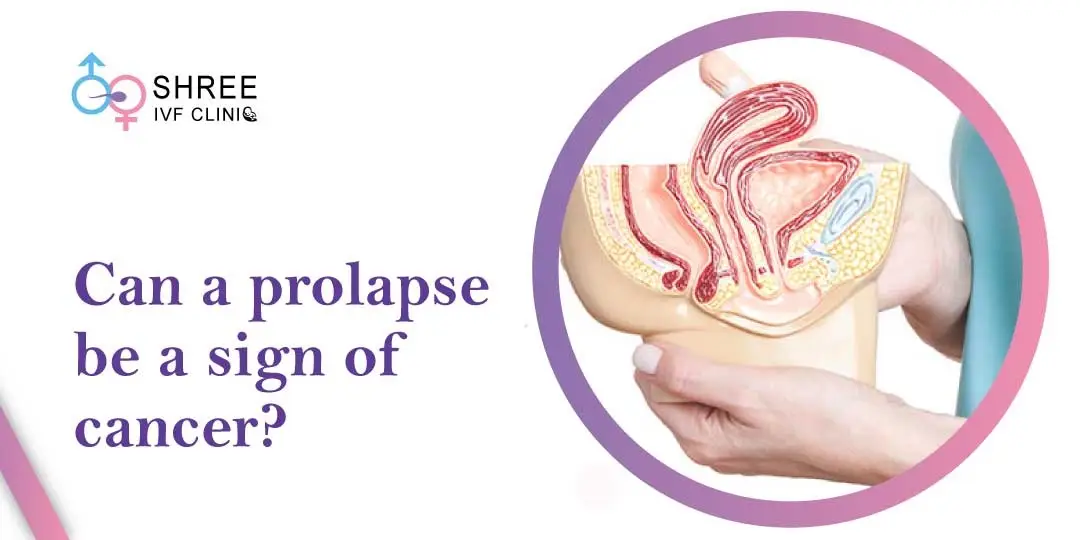Can Pelvic Organ Prolapse Go Away On Its Own?
UPDATED ON 17 MAR, 2024
Pelvic organ prolapse (POP) is a common condition that affects many women, especially as they age or after childbirth. It’s characterized by the descending or bulging of one or more pelvic organs into or outside of the vaginal canal. However, for those dealing with the disquieting symptoms of POP, there is often this essential question that looms large: Can pelvic organ prolapse go away on its own?
Understanding the trajectory of POP and its potential to self-resolve is not just a matter of medical curiosity; it’s a pressing concern for patients who might be reluctant to seek invasive treatments or those who cannot access medical care. This blog will shed light on this matter while aiming to provide comprehensive insights into the natural course of POP, its symptoms, and its management.

AUTHOR
Dr Jay Mehta
Scientific Director & IVF Specialist with 10+ years of experience
CONDITION
GET IN TOUCH ON
Defining Pelvic Organ Prolapse
Pelvic Organ Prolapse is when the pelvic floor muscles and ligaments become weak or damaged, which can cause the pelvic organs to shift or drop from their usual positions. This can result in the bulging of the vaginal canal with specific types such as:
- Cystocele (bladder bulges into the front wall of the vagina)
- Rectocele (rectum bulges into the back wall of the vagina)
- Uterine prolapse (uterus sags and may slip into the vagina)
- Vaginal vault prolapse (post-hysterectomy, the top of the vagina sags or drops).
Why POP should be treated early?
The ramifications of untreated POP can be severe, leading to a decline in the quality of life, affecting intimacy, and causing discomfort and pain during daily activities. Prolonged POP can also lead to other health issues, such as pelvic pressure, urinary incontinence, and recurrent urinary tract infections.
Understanding the early signs and seeking timely medical attention is crucial to curbing the condition’s progression and availing effective treatment.
The Underlying Causes & Symptoms of POP
The causes of POP are multifactorial, often resulting from a combination of factors, including:
- Vaginal childbirth and the strain of labour
- Muscular changes related to ageing
- Hormonal changes
- Genetic predisposition
The symptoms of POP can vary from person to person but typically include:
- A feeling of pressure in the pelvic region
- A visible or palpable bulge from the vagina
- Urinary issues, including stress incontinence
- Constipation
- Discomfort or pain during sexual intercourse
Can POP Be Reversed Naturally?
The natural recovery of pelvic organ prolapse without intervention is a topic of medical debate. Several factors influence whether a POP will resolve on its own:
- Size and Severity of the Prolapse: Minor prolapses may have a higher likelihood of self-resolving than severe cases.
- Age and Hormones: Hormonal changes affect the elasticity and strength of pelvic tissues, suggesting that older individuals may experience less natural resolution.
- Muscle Strength: The ability of pelvic floor muscles to recover and support the organs plays a significant role.
- Underlying Health Conditions: Other medical issues can inhibit or enhance the body’s healing ability.
Can POP Repair On Its Own?
POP repair without surgical intervention is highly unlikely. However, lifestyle changes and non-invasive treatments can help manage symptoms and prevent the condition’s progression. These may include:
- Pelvic Floor Exercises: Strengthening the pelvic muscles through targeted exercises can reduce pressure on weakened tissues.
- Weight Management: Obesity or rapid weight gain increases intra-abdominal pressure, putting
Exploring the Spectrum of Treatment Options for POP
Medical advancements have yielded several treatment modalities for POP, ranging from lifestyle changes to intricate surgeries.
Non-surgical Treatments to Address POP
For many women, non-invasive treatments may provide adequate relief from POP symptoms. These include:
- Kegel exercises and pelvic floor muscle training
- Pessaries, which are supportive devices worn in the vagina to help hold the pelvic organs in place.
- Lifestyle modifications such as avoiding heavy lifting and managing constipation.
Surgeries for Lasting POP Relief
When non-surgical strategies prove insufficient, surgical options become highly effective, especially for those with severe POP. These may involve:
- Uterine suspension (uterine fixation or hysteropexy)
- Colporrhaphy (surgical repair of the vaginal wall)
- Sacrocolpopexy (woven mesh to hold the prolapsing organ in the correct anatomical position)
- Hysterectomy (removal of the uterus) can also be performed abdominally or laparoscopically.
Deciding on whether to opt for surgery should be a collaborative process between the patient and their healthcare provider, weighing the risks and benefits of each procedure.

4,790+
379K+
finding the right solutions tailored to their specific
circumstances can make all the difference “
Why is surgery the first choice of treatment in the majority of pelvic organ prolapse cases?
Despite the range of non-surgical treatments available, surgery is often considered the first choice for the majority of pelvic organ prolapse (POP) cases due to its potential to provide a more definitive and long-lasting solution.
Non-surgical options can be very effective but may offer temporary relief, require ongoing management, or be unsuitable for severe cases. Surgical interventions are designed to anatomically correct the prolapse, aiming to restore the normal function and position of the pelvic organs with a single procedure. This can significantly improve the quality of life for those experiencing marked discomfort or disruption to their daily activities due to POP.
Nonetheless, the decision for surgery is highly individual and should be made after careful evaluation of the patient’s condition, potential risks, other health factors, and personal preferences.
Navigating Lifestyle Changes and Safeguarding Against POP Recurrence
In conjunction with medical intervention, lifestyle changes and preventive measures can significantly reduce the risk of POP recurrence.
- Maintaining a healthy weight and body
- Avoiding constipation by consuming a high-fibre diet
- Quitting smoking
- Adhering to proper lifting techniques
- Regularly engaging in appropriate exercises, including Kegels and other pelvic floor-strengthening workouts
These habits can augment treatment outcomes and potentially forestall the need for repeat surgeries.
When to Expect Improvement Without Intervention?
For a subset of women with milder symptoms, diligently engaging in pelvic floor exercise routines may yield substantial improvement over time. However, it is paramount to remain under the supervision of a gynecologist who can monitor the progress and intervene if necessary.
Seeking Professional Advice
While it’s understandable to hope for the best, it’s equally essential not to delay seeking professional medical advice for POP. Only a healthcare provider can assess the severity of the condition and recommend the best course of action. The earlier the diagnosis, the more treatment options are available, and the likelier it is to find non-invasive solutions.
In Summation:
Pelvic organ prolapse is a complex condition with multifaceted treatment approaches. While some cases may see improvement through targeted exercises and lifestyle changes, many instances warrant medical intervention to provide lasting relief. Patients must balance their hopes for a spontaneous resolution with the necessity of professional evaluation and timely intervention.
For those grappling with the uncertainties of POP, remember that every step, whether it’s a conversation with a healthcare professional or a new exercise regime, is a step towards proactive self-care. With knowledge and tailored medical guidance, the future can promise restored health and comfort.
AUTHOR
Dr Jay Mehta
Scientific Director & IVF Specialist with 10+ years of experience
TREATMENT
CONDITION
CALL US 24/7 FOR ANY HELP
GET IN TOUCH ON
Share Article on
Related Readings
How is a Bleeding Prolapse Treated?
Epithelial, Germ Cell, and Stromal are ovarian cancer types which are classified by their originating cells
Can Pelvic Organ Prolapse be a Sign of Cancer?
Pelvic Organ Prolapse (POP) doesn’t directly cause cancer, but women with this condition are at a higher risk of developing certain cancers like uterine & gallbladder cancers
Why Does Uterine Prolapse Cause Bleeding?
Heavy periods, bleeding between periods, and postmenopausal bleeding are forms of abnormal vaginal bleeding that can severely impact a woman’s quality of life




